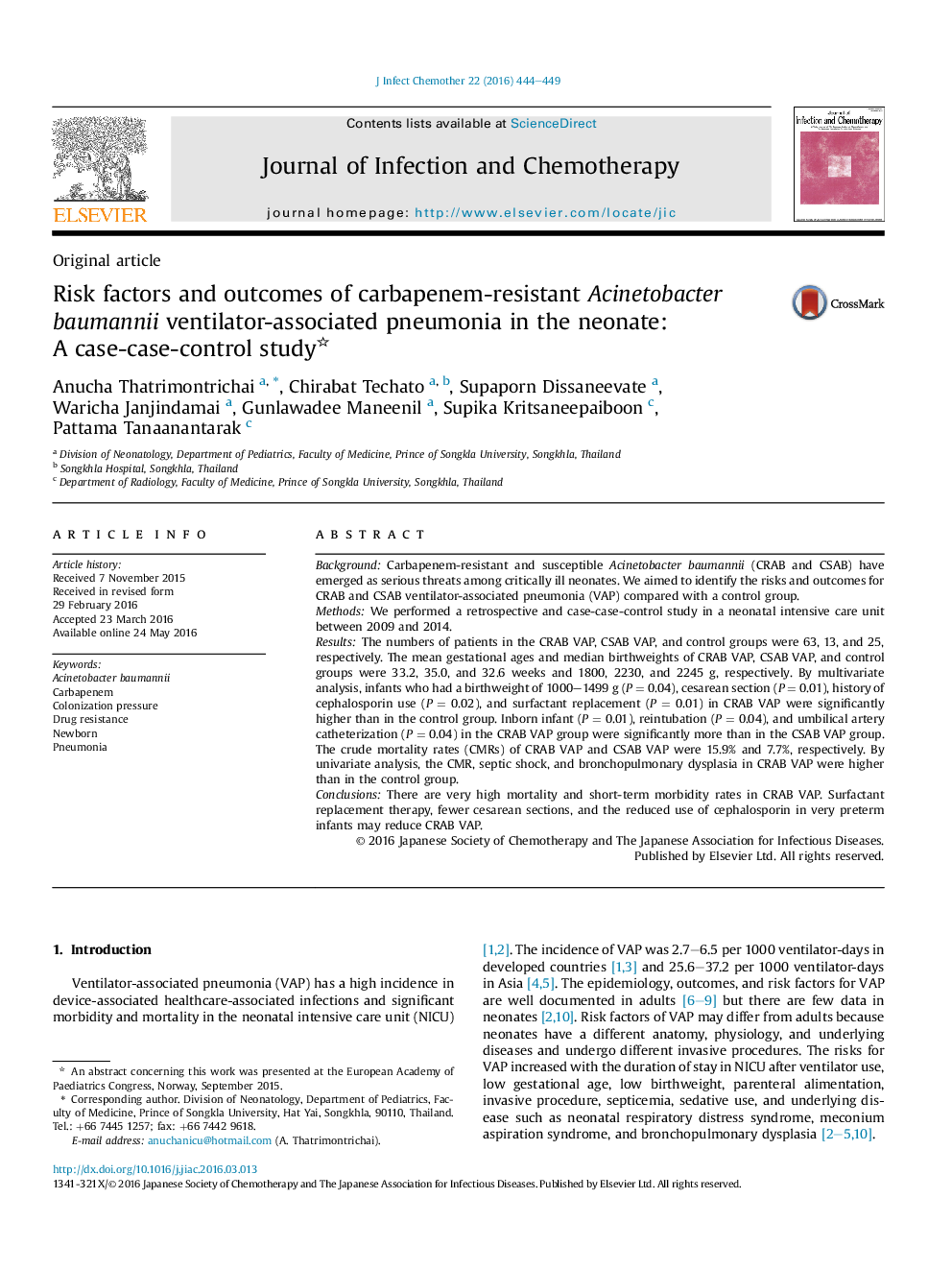| Article ID | Journal | Published Year | Pages | File Type |
|---|---|---|---|---|
| 3376637 | Journal of Infection and Chemotherapy | 2016 | 6 Pages |
BackgroundCarbapenem-resistant and susceptible Acinetobacter baumannii (CRAB and CSAB) have emerged as serious threats among critically ill neonates. We aimed to identify the risks and outcomes for CRAB and CSAB ventilator-associated pneumonia (VAP) compared with a control group.MethodsWe performed a retrospective and case-case-control study in a neonatal intensive care unit between 2009 and 2014.ResultsThe numbers of patients in the CRAB VAP, CSAB VAP, and control groups were 63, 13, and 25, respectively. The mean gestational ages and median birthweights of CRAB VAP, CSAB VAP, and control groups were 33.2, 35.0, and 32.6 weeks and 1800, 2230, and 2245 g, respectively. By multivariate analysis, infants who had a birthweight of 1000–1499 g (P = 0.04), cesarean section (P = 0.01), history of cephalosporin use (P = 0.02), and surfactant replacement (P = 0.01) in CRAB VAP were significantly higher than in the control group. Inborn infant (P = 0.01), reintubation (P = 0.04), and umbilical artery catheterization (P = 0.04) in the CRAB VAP group were significantly more than in the CSAB VAP group. The crude mortality rates (CMRs) of CRAB VAP and CSAB VAP were 15.9% and 7.7%, respectively. By univariate analysis, the CMR, septic shock, and bronchopulmonary dysplasia in CRAB VAP were higher than in the control group.ConclusionsThere are very high mortality and short-term morbidity rates in CRAB VAP. Surfactant replacement therapy, fewer cesarean sections, and the reduced use of cephalosporin in very preterm infants may reduce CRAB VAP.
